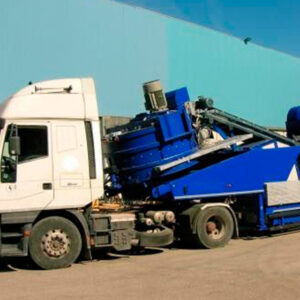




Concrete Batching Plant
A concrete batching plant, also known as a concrete mixing plant or a concrete plant, is a facility that combines various ingredients to produce concrete. The primary components include aggregates, water, cement, and additives, which are measured and mixed in predetermined proportions. The following is an explanation of the key products and components associated with a concrete batching plant:
Batching Plant Components:
- Aggregate Bins: Storage containers for various types and sizes of aggregates (sand, gravel, crushed stone) that are used as the main components in concrete.
- Conveyor Belts: Transport aggregates from the bins to the mixing unit.
- Weighing System: Precision equipment to measure and control the quantity of each component (aggregates, cement, water, additives) in the mix.
Mixing Unit:
- Mixer: The core component where the ingredients are combined and mixed to form concrete. Common types include drum mixers and twin-shaft mixers.
- Water and Additive Systems: Equipment to measure and inject water and additives into the mix for desired properties.
Control System:
- Batching Plant Control Panel: An interface where operators can monitor and control the entire batching process, including the mixing time, discharge, and other parameters.
- PLC (Programmable Logic Controller): A computerized control system that automates and manages the batching process for increased efficiency and accuracy.
Cement Silos:
- Storage Silos: Vertical containers used to store cement. They can be of various sizes and configurations to accommodate different production needs.
Batching Plant Accessories:
- Screw Conveyors: Transport cement and other materials between different components of the batching plant.
- Batching Plant Software: Specialized software that assists in automating and optimizing the batching process, ensuring precise and consistent mixes.
Mobile Concrete Batching Plant:
- Description: A portable or mobile version of a concrete batching plant that can be transported to different construction sites.
- Advantages: Offers flexibility and convenience, especially for projects with varying locations.
Stationary Concrete Batching Plant:
- Description: A fixed, non-mobile version of a concrete batching plant designed for long-term use at a specific location.
- Advantages: Ideal for large-scale projects with consistent production needs.
Concrete Recycling System:
- Description: Optional equipment that allows the recycling of leftover concrete from the mixer and other components, reducing waste and environmental impact.
Concrete Cooling System:
- Description: Specialized equipment to control the temperature of the concrete mix, particularly important in hot climates or when using temperature-sensitive materials.
Batching Plant Dust Collection System:
- Description: Systems to collect and filter dust generated during the batching process, improving air quality and reducing environmental impact.
Concrete batching plants play a crucial role in the construction industry by providing a reliable and efficient way to produce high-quality concrete. The selection of a specific type of batching plant depends on factors such as the project size, production requirements, and site conditions.
